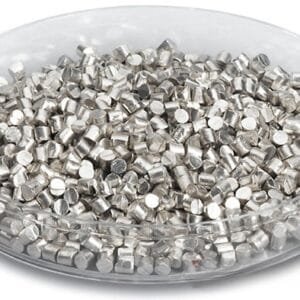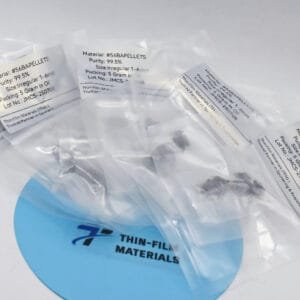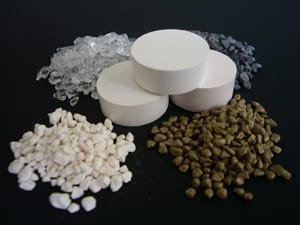Chromium Titanium Evaporation Materials Description
TFM supplies Chromium Titanium (Cr/Ti) evaporation materials, a high-performance binary alloy used in physical vapor deposition (PVD) for producing durable, conductive, and corrosion-resistant thin films. The combination of chromium’s hardness and adhesion properties with titanium’s lightweight, stable oxide formation makes this alloy ideal for demanding thin film systems.
Cr/Ti thin films are valued in applications requiring:
High mechanical strength and wear resistance
Stable adhesion to oxides, nitrides, and metals
Controlled electrical conductivity
Corrosion-resistant barrier layers
High-temperature durability in vacuum conditions
This material is widely used in microelectronics, optical coatings, MEMS, and decorative/functional surface finishes.
Chromium Titanium Evaporation Material Specification
| Property | Value |
|---|---|
| Chemical Formula | Cr/Ti Alloy (common ratios: 80:20, 50:50, 20:80) |
| Purity | ≥ 99.95% (3N5) metals basis |
| Form | Pellets, tablets, chunks, or custom-shaped pieces |
| Appearance | Metallic gray, dense solid |
| Melting Point | ~1450–1600 °C (composition-dependent) |
| Density | ~5.5–6.8 g/cm³ |
| Evaporation Method | Electron beam (e-beam) or thermal evaporation |
| Particle Size | Typically 1–10 mm or per custom request |
| Packaging | Vacuum-sealed under inert gas or argon-filled ampoules |
Custom alloy compositions and geometries are available upon request.
Applications of Chromium Titanium Evaporation Materials
Hard and decorative coatings for tools and watch components
Diffusion barriers and adhesion layers in semiconductors
Optical interference and reflective coatings
Conductive thin films for flexible electronics
Multilayer systems in advanced display and photovoltaic devices
Handling and Storage
Store in a cool, dry environment, sealed from air and moisture.
Use non-metallic tweezers and gloves to prevent surface contamination.
Minimize thermal shock when placing in crucibles to prevent cracking.
Packaging
TFM carefully packages Chromium Titanium evaporation materials in anti-static containers, vacuum-sealed or backfilled with inert gas to maintain purity and prevent oxidation. Each shipment includes labeling with composition, purity, and batch number for full traceability.
Get Contact
TFM is your trusted source for Chromium Titanium evaporation materials, offering customized compositions and shapes tailored to your vacuum coating systems.
Contact us today for technical consultation or to request a quote.


 MSDS File
MSDS File



Reviews
There are no reviews yet.